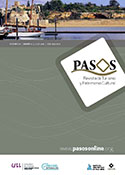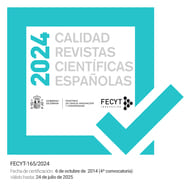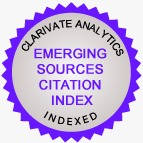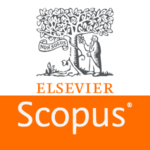Barcelona's tourist image through international films
DOI:
https://doi.org/10.25145/j.pasos.2016.14.055Keywords:
Barcelona, tourist destination, Audiovisual image, tourist image, filmsAbstract
The audiovisual world, and consequently images, are a key element in the social, cultural and economic development of 21st century societies. The real spaces transformed into audiovisual locations produce an influence, conscious or unconscious, that induces to incorporate to the personal imaginary of each one the places where their favorite productions are developed. This article is one of the latest results of the author's line of research on tourism and cinema. The main objective is to identify, analyse and evaluate the real places in Barcelona that appear in international films and to compare their similarities and differences with the tourist image of Barcelona. The results have been obtained from a mixed methodology: the analytical-descriptive one, typical of the analysis of film productions, and the hypothetical-deductive one linked to the development of the concept of image, together with comparative methods. The main conclusion of the study is the positive image of Barcelona that is transmitted by the majority of international films and that, moreover, coincides with the main attributes and values of the city's positioning
Downloads
Publication Facts
Reviewer profiles N/A
Author statements
- Academic society
- PASOS. Revista de Turismo y Patrimonio Cultural
- Publisher
- Instituto Universitario de Investigación Social y Turismo. Universidad de La Laguna (España) - Instituto Universitario da Maia ISMAI (Portugal)
References
Ashworth, G.J. y Goodall, B. 1998. Marketing in the Tourism Industry. The Promotion of Destination regions. London: Routledge.
Beeton, S. 2005. Film-Induced Tourism. Aspects of Tourism nº 25. Great Britain: Channel View Publications.
BFI y Oxford Economics. 2012. The economic impact of the UK Film Industry. Disponible en: http://www.bfi.org.uk/sites/bfi. org.uk/files/downloads/bfi-economic-impact-of-the-uk-film-industry-2012-09-17.pdf (Último acceso: 7 septiembre 2014).
Camprubí, R., Guia, J. y Comas, J. 2009. “La formación de la imagen turística inducida: un modelo conceptual”. Pasos. Revista de Turismo y Patrimonio Cultural, 7(2): 255-270.
Chias, J. 2005. El turismo de ciudad. Desarrollo y marketing turístico de ciudades. Disponible en: http://burgosciudad21. org/adftp/El_Turismo_de_Ciudad.pdf (Último acceso 5 septiembre 2014).
Donaire, J.A. 2003. La dimensió del turisme. En A. Clave (coord.), Recursos Territorials Turístics I. Barcelona: UOC.
European Audiovisual Observatory s.f. World Film Market Trends 2014. Disponible en: http://www.obs.coe.int/en/home (Último acceso 15 septiembre 2014).
European Cities Marketing 2013. The European Cities Marketing. Benchmarking Report. Disponible en: http://www.europeancitiesmarketing. com (Último acceso: 15 septiembre 2014).
Galí, N. y Donaire, J.A. 2005. “The social construction of the image of Girona: a methodological approach”. Tourism management, 26(5): 777-785.
Gartner, W. 1993. “Image formation process”. Journal of Travel and Tourism Marketing, 2(2/3): 191-215. Gunn, C.A. 1972: Vacationscape. Designing Tourist Region. Washington DC: Taylor and Francis / University of Texas.
Hudson, S. y Ritchie, J.R.B. 2006. “Film tourism and destination marketing: the case of Captain Corelli’s mandolin”. Journal of Vacation Marketing, 12(3): 256-68.
Internet Movie Database (IMDB) s.f. Disponible en: http://www.imdb.com (Último acceso 17 septiembre 2014)
Lipovetsky, y G., Serroy, J. 2009. La pantalla global. Barcelona: Anagrama.
López, E. y Osácar, E. 2006. “Tourism Destination Placement.”: La imagen de los destinos turísticos a través de los largometrajes”. Cuadernos de Ocio 2, 123-133.
Macionis, N. 2004. Understanding the film-induced tourist. En W. Frost, G. Croy, S. Beeton (Eds.), ITAM Conference Proceedings. Melbourne: Tourism Research Unit, Monash University.
Mansfeld, Y. 1992. “From motivation to actual travel”. Annals of Tourism Research, 19(3): 399-419.
MasterCard Global Destination Cities Index. 2014. Disponible en: http://newsroom.mastercard.com/wp-content/uploads/2014/07/Mastercard_ GDCI_2014_Letter_Final_70814.pdf (Último acceso 15 septiembre 2014).
Organización Mundial del Turismo (OMT) 2004. Sustainable Tourism Development: Guide for local planners. Madrid: WTO
Organización Mundial del Turismo (OMT) 2013. El turismo internacional mantendrá un crecimiento fuerte en 2013. Disponible en: http://media. unwto.org/es/press-release/2013-01-29/el-turismo-internacional-mantendra-un-crecimiento-fuerte- -en-2013 (Último acceso 15 septiembre 2014).
Osácar, E. 2009. “Del turismo y el cine al turismo cinematográfico”. HER&MUS, Heritage & Museography, 2: 16-23
Osácar, E. 2013. Barcelona, una ciudad de película. Barcelona: Diéresis y Ajuntament de Barcelona.
Osácar, E. 2014. Catalunya de pel·lícula. Barcelona: Diéresis y Agència Catalana de Turisme.
Plan Estratégico de Turismo de la Ciudad de Barcelona 2015 2009. Disponible en: http://www.turismebcn2015.cat/ (Último acceso: 5 septiembre 2014)
Riley, R. y Van Doren, C. 1998. “Movie induced tourism”. Annals of Tourism Research 25(4): 919-35.
Roesch, S. 2009. The experiences of film location tourists. Bristol, Reino Unido: Channel View Publications.
Rosado, C. y Querol, P. 2006. Cine y turismo. Una nueva estrategia de promoción. Madrid: Ocho y medio. TCI Research 2013, Travelsat Tourism Competitive Index, Disponible en, http://tci-research.com/ travelsat-tourism-index/ (Último acceso: 17 septiembre 2014)
Thomson Holidays. 2004. Cinema sightseers, sun, sand, sea and cinema, England.
Turisme de Barcelona. 2014. Estadísticas de turismo de Barcelona. Disponible en: http://www.barcelonaturisme.com/estadisticas (Último acceso: 8 septiembre 2014).
Urry, J. 1990. The Tourist gaze. Leisure and travel in contemporary societies. London: Sage.
Walmsley, D.J. y Young, M. 1998. “Evaluative images and tourism: The use of personal constructs to describe the structure of destination images”. Journal of Travel Research 36 (3): 65-69.
Downloads
Published
How to Cite
Issue
Section
License
I confirm that the work is original (of my/our authorship), and that it will not be submitted to other journals or publications until the final resolution of the review process in PASOS, RTPC.
I authorize the publication of my work by PASOS, PSTN of free and open access in any of the formats that I deem appropriate, for an indefinite period of time and as a non-remunerated collaboration.
Likewise, the author(s) understands that the published work may be linked or deposited on any server or included in other publications (republication), provided that the new place and/or new edition references the original publication and acknowledges the authorship and copyright ownership of PASOS RTPC publications.
Authors understand that a plagiarism-self-plagiarism check will be performed, and the article may be removed at any time from the editorial flow.










